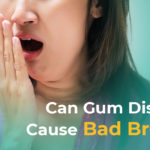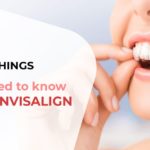Going to your dentist can cause a phobia to some people, but that shouldn’t be the case if oral sedation is used. At Carrum Downs Dental Clinic, you can ask to get sedation dentistry with the option of getting either IV sedation, oral sedation, or laughing gas. Prior to the procedure, an experienced dentist will discuss the procedure and answer any questions and concerns you might have regarding the process.
What is Sedation Dentistry?
Sedation dentistry relies on administering a sedative to keep the patient relaxed. The patient can thus relax in the dentist’s chair, making the entire procedure less cumbersome.
Levels of Sedation Dentistry
- Minimal sedation: the patient is awake but relaxed without feeling the procedure
- Moderate sedation: The patient is conscious but may slur when speaking
- Deep sedation: the patient is on the edge of consciousness, but they can still be awakened when needed
- General anesthesia: this makes the patient completely unconscious during the procedure
Types of Sedation Dentistry
Inhaled minimal sedation
Happy gas eases patients during dental procures, and it’s often inhaled to provide first-acting but minimal sedation. To administer the sedative, your dentist will place a mask over your nose that supplies a combination of oxygen and nitrous oxide.
The dentist can control how much gas you receive, and it wears off quickly after the mask is taken off. Laughing gas has minimal effect on your functions, and it’s the only form of sedation where you are allowed to drive after the procedure.
Oral sedation
Oral sedation dentistry relies on administering a pill that decreases brain activity in parts that control anxiety and fear. The most common oral sedatives used are benzodiazepine varieties such as Xanax, Valium, and Halcion. Oral sedation kicks in one hour after swallowing the pill, and it makes you feel relaxed.
The dentist can also up your dose, which will cause amnesia if you have dental phobia and don’t want to have memories of the procedure. While oral sedation is generally safe, keep in mind that the dentist cannot easily change the sedation level; instead, you will have to wait for your body to metabolize for the effect to kick in.
IV sedation
IV sedation dentistry is mainly reserved for dental cases that require deep sedation and anesthesia. You will receive the sedative drug via an IV line to your vein. This form of sedation dentistry works more quickly, and the dentist can continually adjust the sedation level.
Bottom Line
Sedation dentistry is recommended for people with dental anxiety or a genuine fear keeping them from going to a dentist. Our child dentist, Carrum Downs Dental Clinic, provides dental sedation to children who are too terrified to cooperate during a dental visit.
Dentists can also offer sedation to anyone with a bad gag reflex or very sensitive teeth and low pain thresholds. Your dentist can also recommend sedation dentistry if you are undergoing a lengthy dental procedure with a substantial amount of work to be done.


